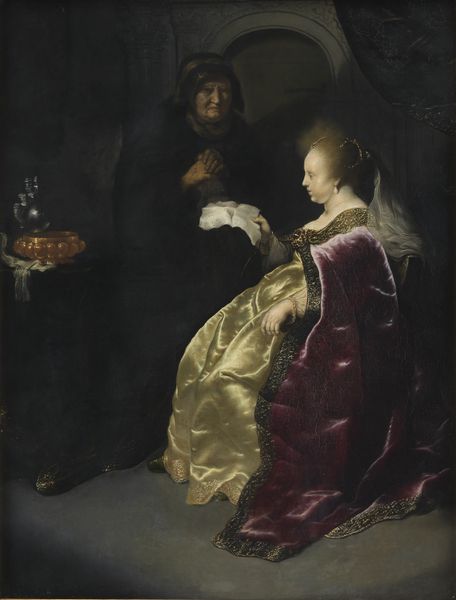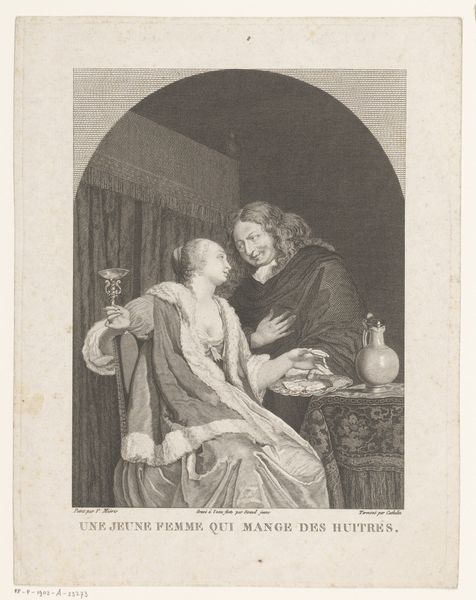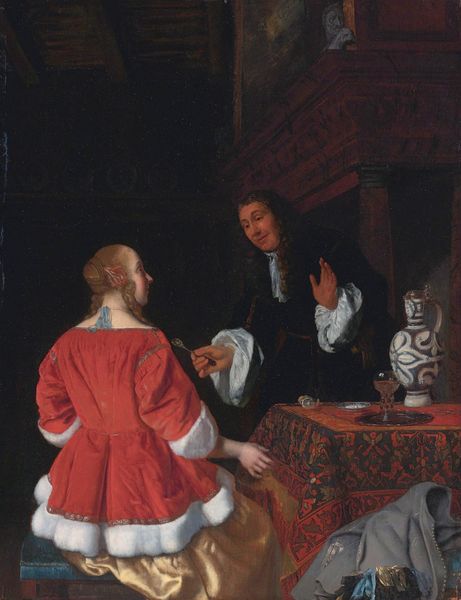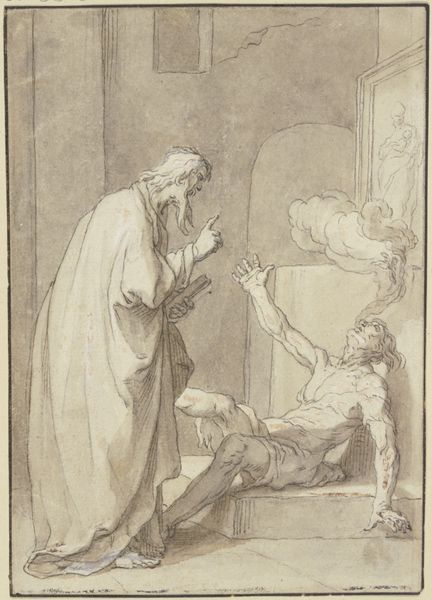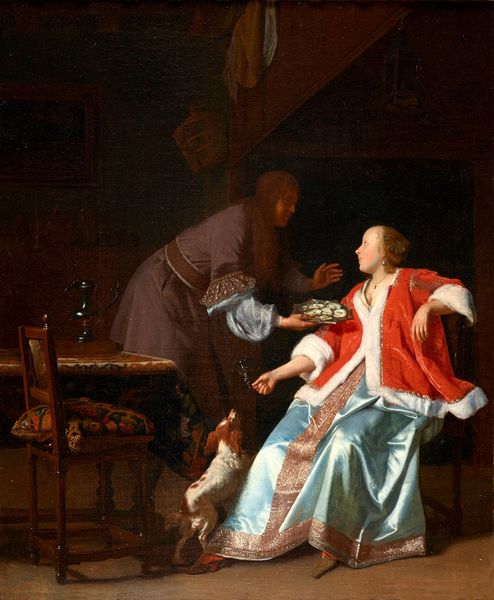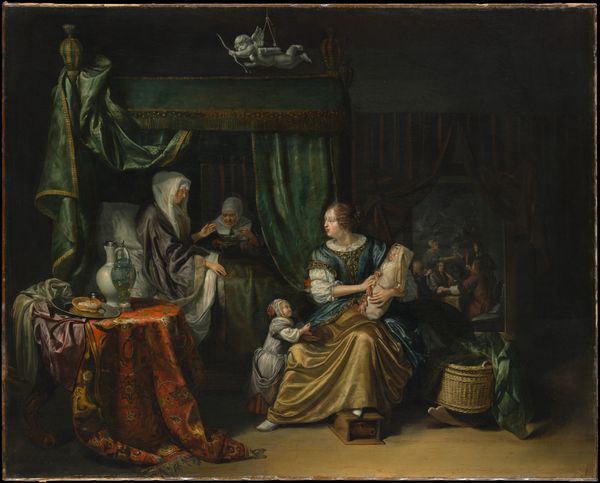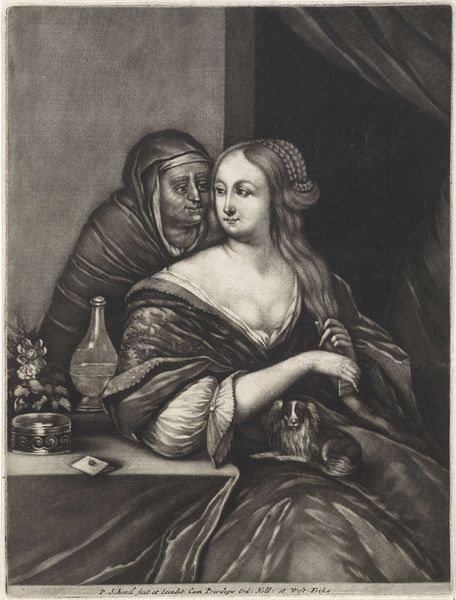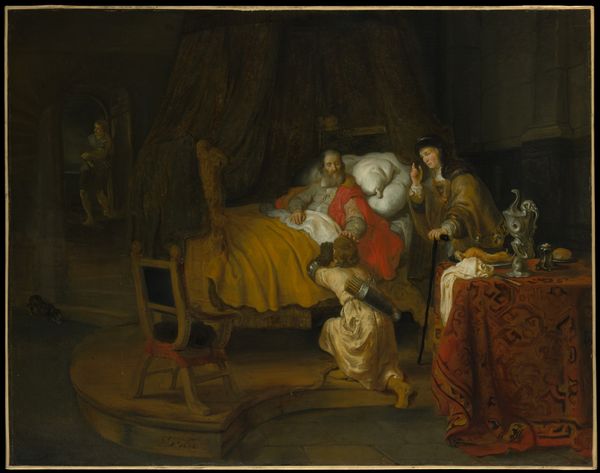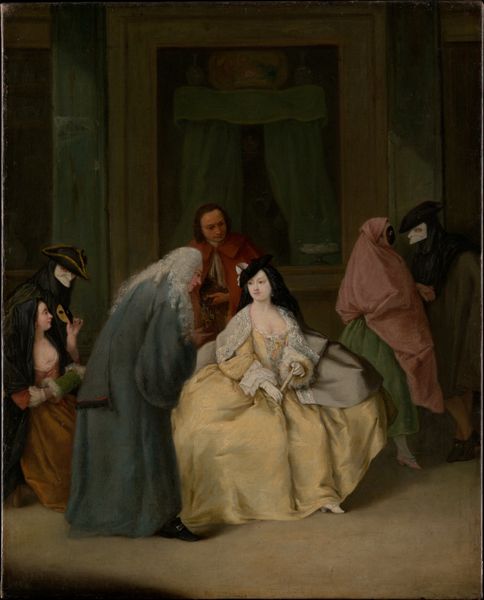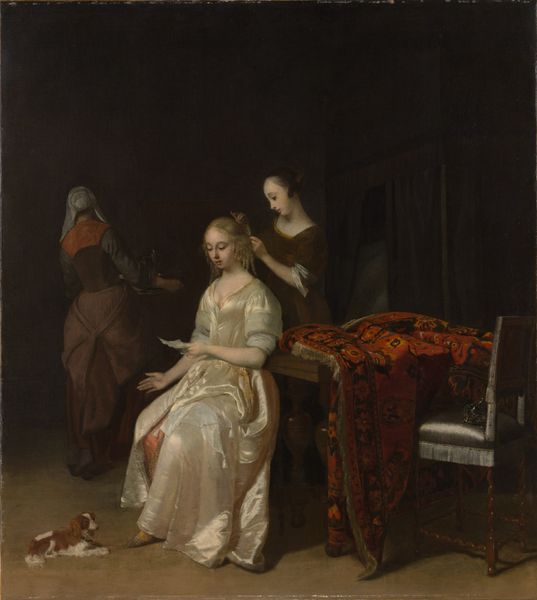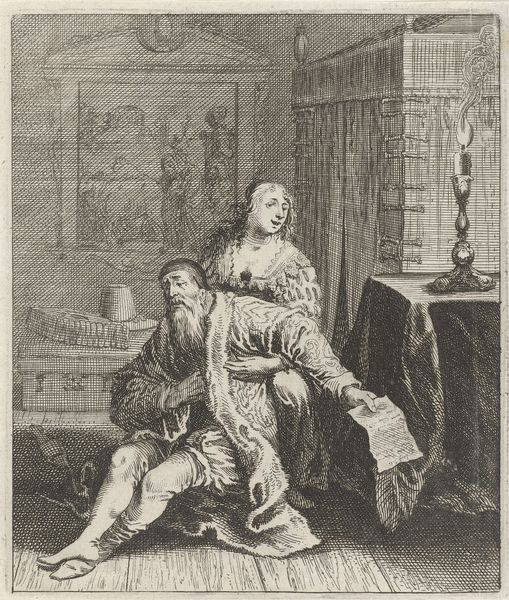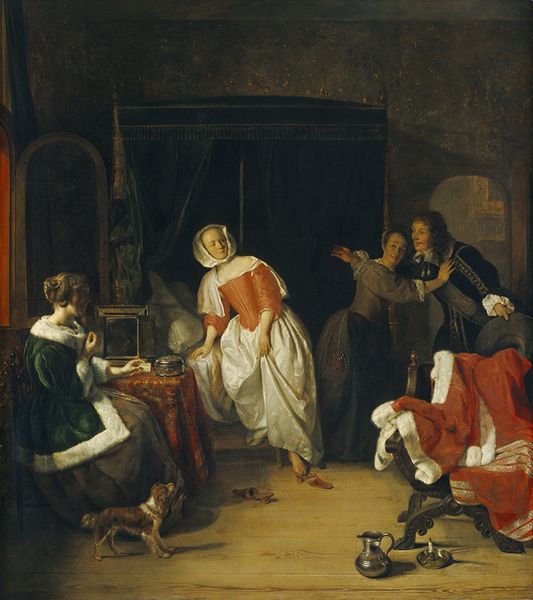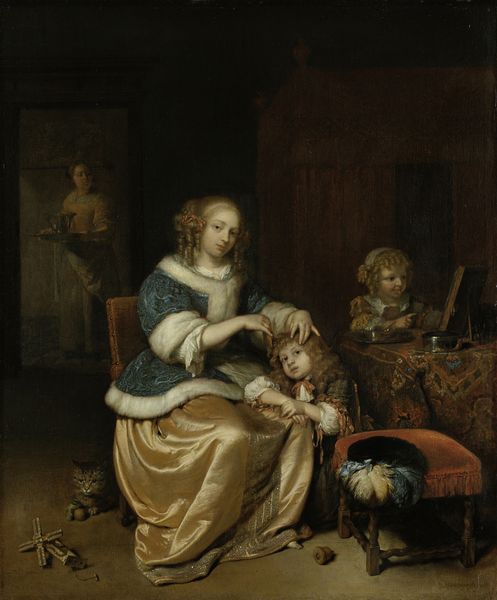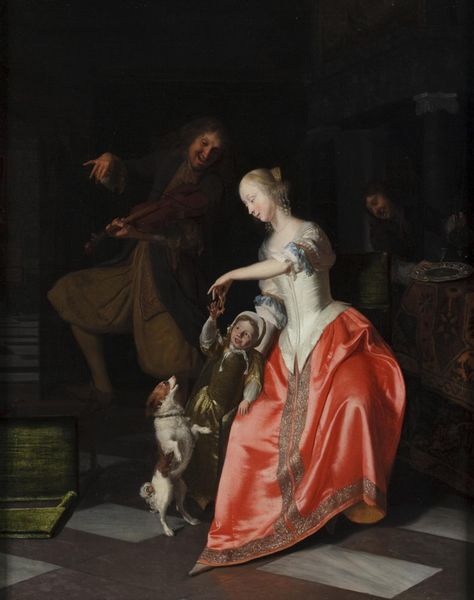
oil-paint, paper
#
netherlandish
#
baroque
#
dutch-golden-age
#
oil-paint
#
figuration
#
paper
#
oil painting
#
14_17th-century
#
genre-painting
#
realism
Copyright: Public Domain
Editor: This is Jan Steen's "Meal of Oysters" from 1661. The painting shows a man offering a plate of oysters to a woman. It definitely has a rather suggestive, almost lewd atmosphere, don't you think? How do you interpret this work? Curator: Well, consider oysters. They've long been associated with sensuality, a symbol of Venus herself. It's more than just shellfish on a plate; it represents indulgence, pleasure, and, in the context of 17th-century Dutch genre painting, perhaps fleeting earthly delights. Note his gaze, it’s far from innocent. What feeling do you get from this imagery? Editor: A kind of transaction, almost. Like he’s offering the oysters, but he wants something in return, maybe? The way he's looking at her feels… calculating. Curator: Precisely! These aren't just oysters; they are visual shorthand for desire and temptation. Look at the slightly parted lips of the woman, her opulent robe... Do you notice the carafe? What liquid is inside and why is this important? Editor: Maybe wine? So, it amplifies the scene and adds to the debauchery? It's like he is actively courting her. Curator: Indeed, these elements contribute to a rich tapestry of symbolic meaning, alluding to courtship, desire, and the complexities of human relationships. Steen masterfully captures this duality, doesn’t he? What’s lasting here is that there is the push-pull of tension and ambiguity within such common symbolism that adds layers of the meaning. Editor: So, it’s not just a snapshot of daily life; it's laden with social commentary. Now, I see so much more of how objects were understood in a totally different way then, carrying meaning like language. Curator: Precisely, visual literacy becomes key.
Comments
No comments
Be the first to comment and join the conversation on the ultimate creative platform.
